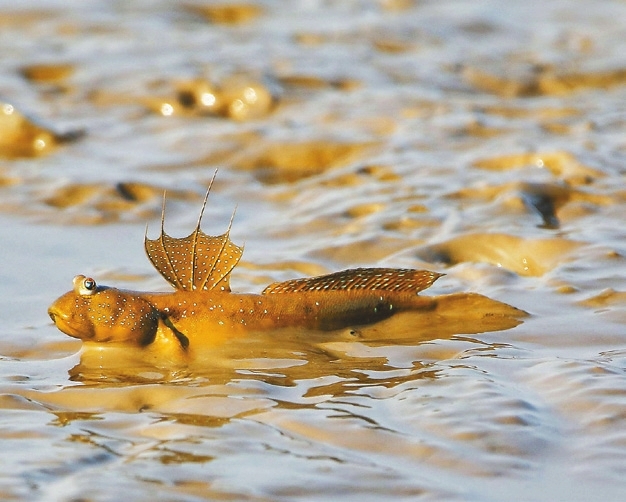
I still remember the first time I learned about mudskippers. It was in a David Attenborough film about first life on Earth and how the evolutionary processes took place on our planet. They were trying to provide a reasonable explanation about how fishes could have come out of the water during the process of evolution, giving birth to the very first amphibians. It makes total sense after you see how much these fish resemble a toad in the shape of their heads. But then, they just became another species in the huge collection of animals you could see in documentaries. But since life is full of surprises, destiny has brought me to this fascinating city, where they show up right in front of my eyes, thriving in their natural environment in abundance. With its body covered in shiny blue spots, the blue spotted mudskipper (Boleophthalmus pectinirostris) has a big head with huge bulging eyes on the top and an amazing dorsal fin that it spreads to threaten other males or attract a potential mate. Their bodies can grow up to 20cm long and their lateral fins are strong enough to allow them to walk and jump over the mud. This helps them look for food, which mainly consists of algae and small invertebrate animals. These fascinating fish are very territorial, so you often see them attacking or threatening nearby males while exploring their newly conquered land outside the water. What puts them in the spotlight is their ability to survive out of water for long periods, since they can obtain oxygen from the atmosphere by absorbing it through their skin, just like amphibians do, and by creating tiny air bubbles over their gills — like a temporary oxygen reservoir. Mudskippers are great contributors to Shenzhen’s complex food chain that provides stability to our ecosystems. They are prey to many bird species, both local and migratory, which are making an early arrival this year. I can’t wait to receive them with lens wide open and will be posting about them very soon. 2021.02.15 A blue spotted mudskipper is seen at Shenzhen Bay, Nanshan District. | 
